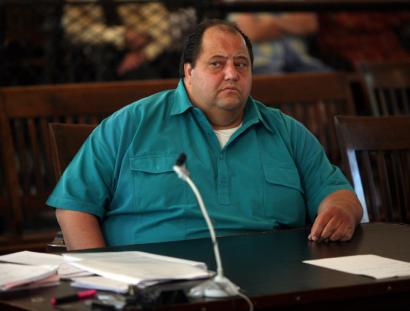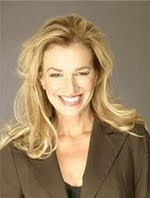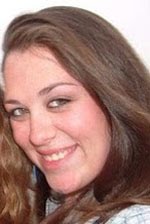 by Kathryn Casey
by Kathryn Casey
In an earlier post, I blogged about a custody battle I covered in the early nineties for a national magazine. In it, Janet Johanson (photo left), an Oregon educator, tried to gain custody of her six nieces and nephews. Her sister had died of breast cancer, and the children were living with the Vaughn Fischer family in the polygamous town of Hildale, Utah. Johanson’s sister, Brenda, had entered into a spiritual marriage and become Fischer’s third wife just before her death, and Fischer and his first and only legal wife were attempting to adopt the children as well. The case was a clash of lifestyles and beliefs, and more than that, for Johanson, a last-ditch effort to save her sister’s children from what she viewed as a life of misery and pain. In the end, she lost. The Utah Supreme Court gave the children to the Fischers.
When the raid in Eldorado took place, I contacted Johanson again, this time asking her to share her views with WCI’s readers. The following is our Q&A.
KC: Tell us about yourself, where you work, what you do today.
JJ: I am currently raising two internationally adopted deaf children, and have/continue to work as an administrator of several deaf agencies/programs (educational, non-profit agencies, government, and private corporation).
KC: Please give us a brief overview of your personal knowledge of polygamous communities. How do you know what it’s like inside this culture?
JJ: I first became aware of the practices of this group when my half-sister was taken by her mother to Utah and then married to her stepfather. She disappeared. During the following years we always sought her out when we visited Salt Lake City, mostly unsuccessfully. When I was a junior at Brigham Young University, she finally made contact with our family in an attempt to recruit my younger sister. I was the one who converted instead. I was given to a man thirty-seven years older than myself, and also disappeared. I stayed in that relationship for seven years, suffering physical, emotional, and spiritual abuse. I lived in Salt Lake City within this group from 1978 - 1986. I was very close to my sister and her children and we started family traditions together (holidays, birthdays, picnics, campouts). When I was ordered to sever ties with my sister by my husband, I defied him, resorting to climbing out of my bedroom window so I could be with my sister and her family.
KC: Why did you leave?
JJ: After my sister Brenda sought and obtained a release from her husband, who was abusing her and her children, she became sick with breast cancer at the age of 35. FLDS members were quick to claim that her affliction was the result of her disobedience. I was shocked out of my “be obedient and keep quiet” mindset and realized that this was not a religion; it was a cult. I left in 1986, and began making preparations for my sister and her family to join me in Oregon.
KC: After your sister’s death, we met when you were fighting to keep your nieces and nephews from being adopted by a polygamous couple. Why did you want to prevent the Fischers from adopting your sister’s children?
JJ: The main reason I wanted to prevent the Fischers from adopting my sister’s children is became I loved them. They were the family I’d been unable to have with the old man I was married to. I was present at Janelle’s birth (she is named for me), and also knew Deanna from the day she was born (they stayed in my home for a while to recuperate). Having already lost my sister, I could not bear to lose more of my family, especially to people who had no interest in them other than to gain status in the community. I had just completed my master's degree in educational administration; rehabilitation counseling; and multi-handicapped education. I was working as a college administrator, and had resources available to help her children achieve her/their dreams.
KC: Have Texas authorities been trying to do the right things for the children of Eldorado? If not, what more should they be doing?
JJ: Yes. They have a difficult job, and they have taken on what will be a thankless position. They do need to ensure they don't victimize the children further. None of the experiences of these social workers, guardian ad litems, court-appointed special advocates, lawyers, public defenders, and foster care providers has prepared them for the mindset and culture of this community. They need to find people like me to help them, who have come out and who have been able to find balance in their daily lives. I'd like to see more psychologists and anthropologists involved in doing research based studies and recommendations on how to rehabilitate the victims (children, mothers who have been brainwashed and also the boys/young men who have been thrown out and shunned).
KC: Is it right to take these children away from their mothers? Their fathers? The only community they know?
JJ: Yes, because they do not have the ability at this time to realize the degree of abuse they have all been subjected to. I would like to see, in the near future, attempts made to unite children with their mothers, just one mother, and given intensive family counseling and support so they can start to build normal family units. Who made the choice to put these children in danger? The men, then the women. The children are now dealing with the consequence of the men's decisions to further their position within the group by blindly following Warren Jeffs and his minions.
KC: What about yesterday's decision, that the raid was illegal? It appears many if not all of the children may be returned to their parents.
JJ: I'm stunned, but then, not again so surprised. The "religion card" was played, and once again, the children are paying the price for society's reluctance to stand up for those who are unprotected. The Germans/Dutch/Austrians/Polish people did not stand up for the Jews. . . . Is Texas not going to stand up for the children? In retrospect, will the descendents of this community become the next generation of "Lost Boys" and "Child Brides" who are so emotionally damaged they cannot ever function in our society?
KC: Does religious freedom enter in here at all?
JJ: No. It’s not a religion. It may have started from religious roots, but it's been perverted by its leaders jockeying for power, money, and sex.
KC: What about the rights of parents to not have their children removed by the state?
JJ: They have the same right to due process that any parent who has endangered their child has.
KC: How widespread is polygamy in the U.S.? Is there much more than we imagine?
JJ: Yes. and it keeps growing as different families and groups are splintered off. There are many, like the families in the HBO series “Big Love,” who "assimilate" in normal society, while living secret lives behind closed doors and tall fences. The children in those communities are at as much risk. Despite what these people promote as the advantages (many mothers to attend to children), most of these children are neglected when mothers and fathers play favorites with their own biological children, and a lesser wife's children are disenfranchised.
KC: Are the Eldorado children being singled out? If so, what should be done about the thousands of children in Colorado City/Hildale, the polygamous enclaves on the Arizona/Utah border?
JJ: I certainly hope that the authorities in those areas where other enclaves are located are realizing their failure to protect the children in their jurisdictions. The home study done of the Vaughn Fischer family in 1988, during our adoption case, for instance, is a revolting travesty. Brenda's children were forced to respond in the way that they did because of threats.
KC: Is polygamy always a bad situation for the children?
JJ: Yes. The normal checks and balances provided by schools, social service agencies, public health services, police, churches, neighbors, and family are not there to protect the children.
KC: You mentioned “Big Love” on HBO. It depicts an odd and dysfunctional but loving suburban family. Are there polygamous households that are healthy for children?
JJ: No. In "Big Love," we see the children struggling with the “code of secrecy” and trying to rationalize the behavior of the adults in the household to their peers. You also see favoritism to specific children from the three mothers. The type of love that develops in these family structures is not the deep "agape" love that comes from healthy, nurturing, caring relationships, but rather, a custodial type of love.
KC: If you could sit down with the mothers from Eldorado, what would you tell them?
JJ: Learn to question. No man is the authority that they should bow to. You have the right to be loved by someone who loves just you, and who wants to be a partner through life with you and your children. Someone who wants to see you grow, and who will nurture that growth.
KC: What about the children?
JJ: You have the right to have fun, to learn exciting new things, to choose your friends, to have a mother and a father who love you more than life itself and are there daily for you. You have the right to have shoes to wear when its snowing outside, and to explore the world and make mistakes without fear of spiritual retribution being dictated by someone who does not have your best interests at heart.
 Watch Oxygen tomorrow night to see Murder Prosecutor Donna Pendergast featured in a new episode of Oxygen's Captured series. The network describes Captured as "an engrossing true-crime series that places women at the center of solving mysteries."
Watch Oxygen tomorrow night to see Murder Prosecutor Donna Pendergast featured in a new episode of Oxygen's Captured series. The network describes Captured as "an engrossing true-crime series that places women at the center of solving mysteries."




















































